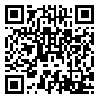BibTeX | RIS | EndNote | Medlars | ProCite | Reference Manager | RefWorks
Send citation to:
URL: http://tkj.ssu.ac.ir/article-1-589-en.html

 , MJ Zare Sakhvidi *
, MJ Zare Sakhvidi * 
 , A Barkhordari
, A Barkhordari 
 , M Mostaghaci
, M Mostaghaci 
 , F Zare Sakhvidi
, F Zare Sakhvidi 
 , R Ghorbani
, R Ghorbani 
 , R Soltani gerdefaramarzi
, R Soltani gerdefaramarzi 

Introduction: Inhalation exposure to dust is one of the most common adverse environmental factors that can have adverse effect on the health of employees. In this study, dust inhalation exposure of workers with different methods as well as GIS was investigated.
Methods: An analytical cross-sectional study was performed on the sample size based on results of homogeneous exposure groups (SEG). Environmental and personal exposure assessments were performed according to standard methods and personal and environmental sampling. The collected data were analyzed based on American industrial hygiene association (AIHA), and then analyzed by using GIS software for mapping the distribution.
Results: The average dust exposure by each individual among the workers within homogeneous exposure groups was 8.61 mg/m3. The highest exposure by each individual was 21.13 mg/m3 that belonged to pulverizer operator and the lowest was 1.97 mg/m3, which was belonged to fine wire operator. The lowest environment concentration was observed in the cutting salon (0.05 mg/m3), and the highest values found in powder salon (22 mg/m3). Exposure management based on AIHA methods showed that the powder, packing and preparation sections have the highest concentration, and cutting section has the lowest values. Exposure management based on GIS techniques showed higher number of at risk employees in comparison with common strategies.
Conclusion: Use of SEG practices in combination with GIS can enhance the quality of respiratory exposure assessment in occupational environments. GIS plays an important role in the screening of air pollution in the working environment by providing a set of services including the possibility of classification into different areas and creating a report based on the map
Received: 2015/02/2 | Accepted: 2016/06/18 | Published: 2016/06/18
| Rights and permissions | |
 |
This work is licensed under a Creative Commons Attribution-NonCommercial 4.0 International License. |



